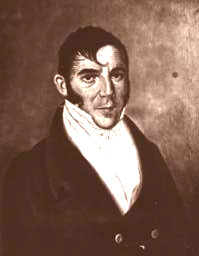Mariano Gálvez facts for kids
Quick facts for kids
Mariano Gálvez
|
|
|---|---|

Mariano Galvez in his youth
|
|
Governor of Guatemala |
|
| In office 1831–1838 |
|
| Personal details | |
| Born | ca. 1794 Guatemala City, |
| Died | March 29, 1862 Mexico City, |
| Political party | Liberal |
| Residences | Guatemala City, Mexico City |
| Occupation | Lawyer, politician |
José Felipe Mariano Gálvez (born around 1794 – died March 29, 1862, in Mexico) was an important lawyer and politician in Guatemala. He was a member of the Liberal party. For two terms, from 1831 to 1838, he served as the leader of the State of Guatemala. This was during a time when Guatemala was part of the Federal Republic of Central America. In 1836, he was also chosen to be a member of the American Philosophical Society, a group that promotes useful knowledge.
Contents
Early Life and Education
Mariano Gálvez was born in the 1790s. He was found as a baby and adopted by the wealthy Gálvez family. He grew up in Guatemala City.
He loved to study and went to school at a convent. Later, he studied law at the Royal and Pontifical University of San Carlos Borromeo. He earned his doctorate degree in law in 1819.
Mariano Gálvez became involved in politics early on. He worked to end a war between Guatemala and El Salvador. He also advised the leader of Guatemala, Gabino Gaínza. After Guatemala became independent, Gálvez supported the idea of Guatemala joining Mexico.
In 1825, when the first federal Congress of Central America met, Gálvez was a representative. He even became the president of the Congress. During a civil war in 1826, he supported the Federalists. He joined forces with Francisco Morazán, a key leader of the Federalists.
Leading Guatemala
Mariano Gálvez became the leader of Guatemala in 1831. This was a challenging time for the country. He was appointed by Francisco Morazán after some political changes.
Gálvez wanted to make many changes to modernize Guatemala. He aimed to reduce the influence of the Catholic Church in government. Here are some of the things he tried to do:
- He made public education separate from the Church.
- He encouraged science and the arts.
- He opened the National Library and the National Museum.
- He worked to make sure laws were respected and citizens had rights.
- He supported freedom of the press and freedom of thought.
- He introduced civil marriage and divorce.
- He brought in a new set of laws called the Livingston Code. This code was from Louisiana in the United States.
- He also changed how local governments worked.
- He introduced a new tax that affected many people, especially native communities.
These changes were part of the Liberal party's plan. They wanted to reduce the power of wealthy families and the Church. For example, they stopped mandatory tithing, which was a tax paid to the Church.
Challenges and Opposition
Not everyone liked Gálvez's fast changes. One big mistake was a contract he made in 1834. This contract allowed a company to colonize large areas of Guatemala, including Izabal, Verapaces, Petén, and Belize. This made many people upset.
In 1835, Gálvez was re-elected for a second term. During this time, a disease called Asiatic cholera spread across the country. Some religious leaders told people that the government was poisoning the water. This made people very angry at Gálvez.
Peasant revolts began in 1837. People chanted "Hurray for the true religion!" and "Down with the heretics!" These revolts grew quickly. Gálvez even asked to move the capital city from Guatemala City to San Salvador.
Some of his former friends, like José Francisco Barrundia and Pedro Molina, turned against him. This happened after he tried to stop the peasant revolt using harsh methods.
In 1838, several cities stopped recognizing his government. In February, the revolutionary forces led by Rafael Carrera entered Guatemala City. They demanded that the cathedral be opened to restore order. This forced Gálvez to give up his power. He stayed in the city after he lost his position.
Later Life and Legacy
Mariano Gálvez died on March 29, 1862, in Mexico. He was buried in the Cemetery of San Fernando.
In 1925, his remains were brought back to Guatemala. Today, they rest in the old School of Law in Guatemala City.
The Universidad Mariano Gálvez de Guatemala, a university founded in 1966 in Guatemala City, is named after him.
See also
 In Spanish: Mariano Gálvez para niños
In Spanish: Mariano Gálvez para niños

